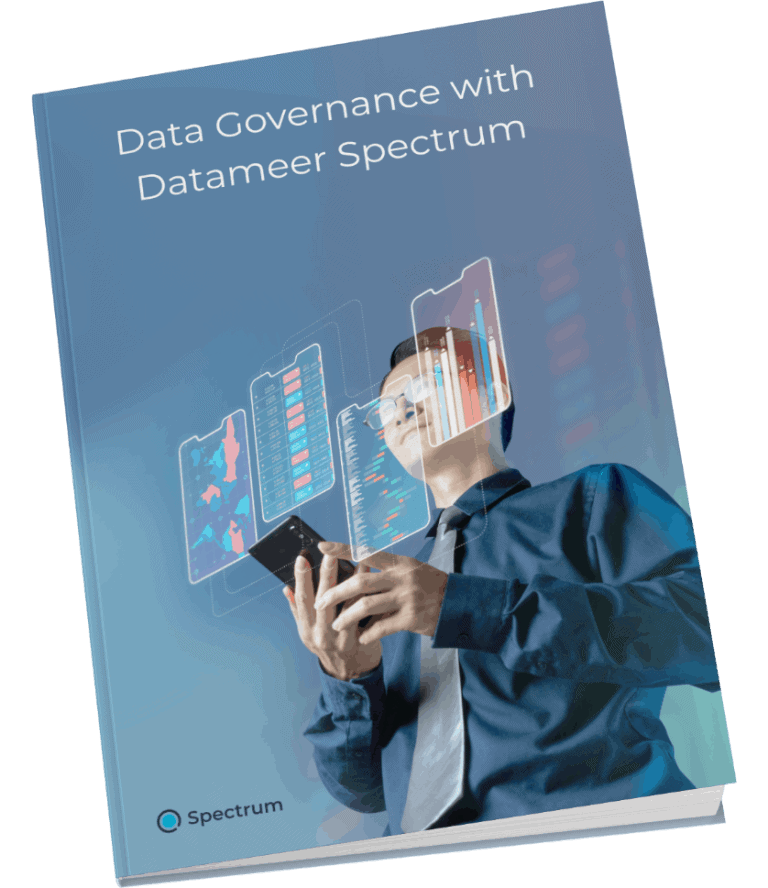
Data Governance Technical Brief
Data Governance is a critical aspect of every organization's data program. It is also an essential set of capabilities and requirements in your ETL and data pipeline platform. Learn about the robust set of data governance features in Datameer and how to use them.

About the Data Governance Ebook
Data is strategic, essential and if mishandled, potentially compromising. It certainly needs to be protected. On the other hand, to become an agile, data-driven organization, data needs to be democratized effectively.
Your data needs a custodial layer to make that happen, and governance is the means to provide that. Its name makes that almost self-explanatory.
In its best implementations, data governance does more than establishing a defensive regime around data. It creates an environment that makes data highly available to the right people, trustworthy, and easily discoverable. In general, good data governance entices people in the organization to explore, query, and contribute data, and it supports efforts around digitalization and promoting data-driven practices.
What is Data Governance?
Learn what makes up data governance.
The Drivers of Data Governance
Learn what key factors are behind the need for good data governance.
The Scope of Data Governance
What does data governance entail and what is its' breadth
Governance Features in Datameer
See the robust data governance features in Datameer that facilitate strong, yet flexible, governance.
DRIVERS OF DATA GOVERNANCE
Data governance covers several key aspects of how you want to manage data for and operate your analytics. While sometimes these different aspects may seem to conflict, a good governance strategy will provide the right balance of all these factors specific to your organization’s needs and strategy. This includes:
-
Data Security – Define how you lock down your data, provide secure views of the data and ensure the proper access controls are in place, both to the system and to the data
-
Data Privacy – There is tremendous risk if data is not private and protected and translated this financial terms
-
Optimization – Involves creating the proper structure and letting team members effectively operate and optimize what they know best
-
Self-Service – Controls that are too tight will stifle self-service. If they are too loose, risk is introduced
-
Sharing and Reusability – Governance needs to implement the proper structure for findability and the right blend of controls for reuse and sharing.
-
Operationalization – A clean structure and process to promote analytics to regularly running jobs
SCOPE OF DATA GOVERNANCE
Governance provides for data quality, veracity, assurances of recentness, security and access policies, and more. We explore each of the key areas of governance and what they entail:
-
Cataloging & Metadata – Data cataloging involves curating, documenting, tagging, and facilitating the general discoverability of data.
-
Lineage – Lineage entails the ability to show where any given piece of data came from, what happened to it, and where it went.
-
Audit – Governance also requires knowing how and when the events surrounding a data flow took place and who made them.
-
Security – Security includes the administration of role-based access controls in which individual users, roles, or groups composed of users have access to particular subsets of dataflows and datasets.
-
Data Quality – Data must be clean and accurate. If it’s not, business users will lose trust in data sets that prove to be defective.
-
Compliance – Data governance also needs to ensure regulatory compliance that needs to be applied in certain business practices and domains.
-
Certification – An explicit certification of certain data sets allows a data lake to function in a more self-service fashion while still maintaining integrity and trust.